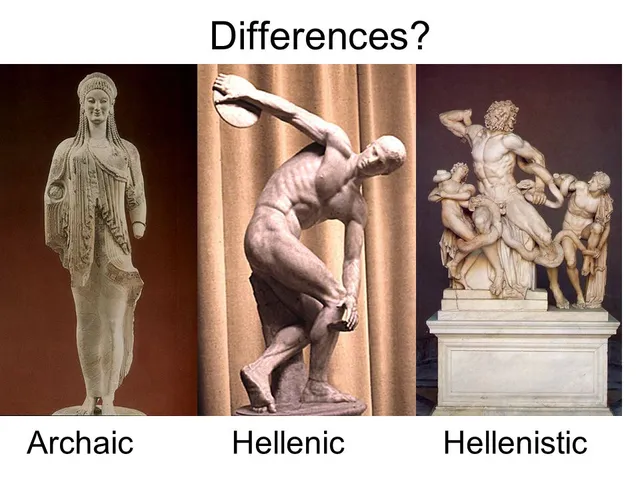
Is there such a thing as a good or bad culture?
When it comes to culture, there is a lot of debate about whether or not it is possible to have a “good” or “bad” culture. Some people argue that all cultures are equal and should be respected, while others believe that different cultures can be judged on their own merits. Each side has its own set of arguments and beliefs, so it can be difficult to determine which one is right.
Those who argue that all cultures are equal often point to the idea that different cultures have different values and beliefs, and that these should be respected. They also argue that judging one culture as “better” or “worse” than another is wrong, as it implies that one group is superior to another. This type of thinking is seen as oppressive, and some people argue that it is a form of cultural imperialism.
On the other hand, those who argue that there can be good or bad cultures point to the fact that some cultures have practices or beliefs that are oppressive, violent, or promote inequality. They argue that it is important to acknowledge these issues and recognize that some cultures may be better than others in terms of their values and beliefs. This type of thinking is seen as necessary, as it helps to create a more open and understanding world.
The debate between good and bad cultures is an ongoing one, and there is no clear answer. Ultimately, it is up to each individual to decide what they believe and how they want to interact with different cultures. It is important to remember that all cultures should be respected and treated with kindness, regardless of whether they are judged to be good or bad.
When examining the concept of good and bad cultures, it's important to first consider the different perspectives from which this question can be approached. Depending on the individual, culture can be seen as either good or bad. Some may argue that a culture is good if it upholds its traditional values and beliefs, while others may view it as bad if it does not support progressive ideas.
Cultures can also be evaluated from a moral or ethical standpoint. For example, some may argue that a culture is bad if it does not uphold human rights or if it has a history of violence and oppression. On the other hand, a culture may be seen as good if it encourages collaboration and cooperation among its members.
Finally, the concept of good and bad cultures can also be interpreted in terms of economic or social progress. A culture may be viewed as good if it is able to provide its members with economic and social opportunities, while a culture may be seen as bad if it fails to do so.
Ultimately, the concept of good and bad cultures is subjective and open to interpretation. Different people will have different opinions on what constitutes a good or bad culture. It is important to consider all perspectives when evaluating a culture, as this will help to provide a more complete picture.
Culture plays an important role in shaping the way we think, feel, and behave. It influences our values, beliefs, and behaviors. As such, it can have a significant impact on our lives and the world around us. But is there such a thing as a “good” or “bad” culture?
The short answer is that it depends. Different cultures have different values and beliefs, and what is considered “good” or “bad” in one culture may not be viewed the same way in another. For example, a culture that values individualism may view ambition and competition as positive traits, while a culture that emphasizes community may see these traits as negative. Ultimately, what is seen as “good” or “bad” is largely subjective.
That being said, certain aspects of a culture can have a profound effect on society. For example, a culture that places a high value on education can have a positive impact on the economy, while a culture that does not value education can lead to economic stagnation. Similarly, a culture that encourages respect for the environment can lead to healthier ecosystems, while a culture that does not value environmental protection can lead to environmental degradation.
It is important to recognize that no culture is perfect, and that all cultures have both positive and negative aspects. However, it is important to strive to create a culture that promotes positive values, respect for diversity, and a sense of equality. Doing so can help us create a better world for everyone.
When it comes to cultures, it can be difficult to determine whether one is "good" or "bad." While some cultures may be more beneficial to its members and the world at large, others may be more detrimental. Let's take a look at some of the pros and cons of good and bad cultures.
Pros of Good Cultures:- A good culture is one that encourages its members to be more accepting and tolerant of different beliefs, lifestyles, and situations.
- It promotes collaboration and teamwork among its members, leading to increased productivity and creativity.
- Good cultures also have a positive effect on the environment, as they often focus on sustainability and conservation.
- Good cultures can be difficult to maintain, as they require a certain level of dedication from its members. This can be challenging if the members don't share the same values.
- Good cultures may also be more susceptible to outside influences, as they are more open to different ideas and perspectives.
- In some cases, good cultures can become stagnant, as they become too comfortable in their own ways and fail to evolve and adapt.
- Bad cultures can be beneficial in certain situations, as they can help foster a sense of unity among its members.
- Bad cultures can also help maintain order, as they often have clear rules and regulations that everyone must follow.
- In some cases, bad cultures can be beneficial for a short period of time, as they can help to quickly accomplish a specific goal.
- Bad cultures can be oppressive, as they often focus on conformity and do not allow for individual expression or growth.
- Bad cultures can also lead to a lack of innovation and progress, as members are discouraged from thinking outside the box.
- Bad cultures can also be dangerous, as they can lead to discrimination and hatred of certain groups of people.
At the end of the day, it's important to remember that no culture is inherently good or bad. It's up to the members of that culture to ensure that it is beneficial to them and to the world around them. By being open-minded and understanding of different cultures, we can create a world in which everyone can thrive.










